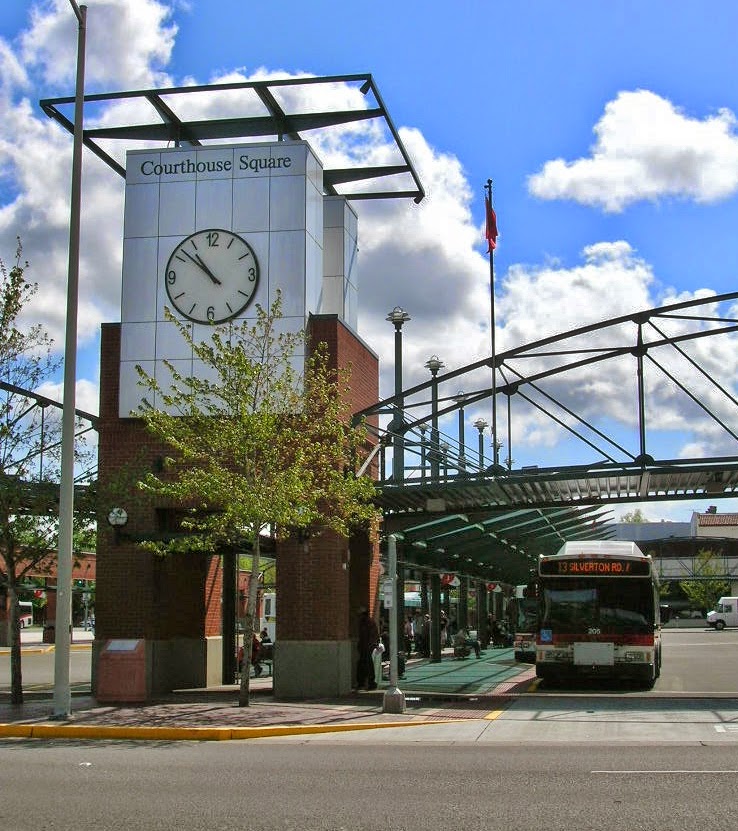As part of the system realignment, Cherriots and the consultant team identified a set of services for phase two:
Phase II builds on Phase I by adding evening, weekend, and holiday service. Evening service would include service past 9:00 PM with the last bus pullout at the downtown transit center occurring at 11:00 PM. Weekend service would include Saturday and Sunday service as well as service on the following holidays: Presidents Day, Memorial Day, Independence Day, Labor Day, and Veterans Day. There will continue to be no service on New Year’s Day, Thanksgiving Day, and Christmas Day. Phase II would also allow for the incorporation of a downtown circulator and the reinstatement of the student bus pass program for middle and high school students.Lots of things to like there!
But of course they aren't free.
So Cherriots is considering a tax measure for the May 19th election of this year.
At the board meeting Cherriots will consider going to the voters for one of these:
- Property Tax Levy: $0.58 per $1,000 of assessed value
- Payroll Tax: 0.21% of annual payroll
Key to this is getting business interests on board, and on January 8th Cherriots presented the concepts to the Chamber of Commerce, which themselves met on the 21st to consider the question. In the information packet, Cherriots did not publish or know of the Chamber's recommendation.
It'll be interesting to learn more. Deciding now for a May election date seems like a pretty compressed time frame, and it wouldn't be surprising to see it pushed out.
Flexible Transit to Pilot in West Salem
This summer Cherriots will start the pilot program for a kind of on-demand transit.
 |
| Live near the yellow? You'll be able to hail a bus with a phone! |
 |
| Vans, not full-sized buses, would be used |
More details will come out. And it will be very interesting to see how easy and convenient it is for folks.
Look for that to launch this summer.
Legislative Agendas
Finally, the Federal Legislative agenda is out and it includes:
- $2.4 million for bus replacement
- $2 million for the South Salem Transit Center
- $1.5 million for a computer system for real-time data tracking and analysis
The Board meets tonight, Thursday the 22nd, at 6:30pm in Courthouse Square, Senator Hearing Room, 555 Court St NE.
(For more on Cherriots, including the development of the Flexible Transit concept, see all notes here.)
Postscript
The discussion of Flexible Transit's a bit thin, a few have pointed out by email, so here's more. Sorry about that.
 |
| Proposed Flex Stops |
The service frequency is envisioned at every half-hour - or maybe a better way is to say a hour-hour wait or window.
The annual cost would be about $200,000. This is, of course, considerably less than the $15 million "stupid" level of service I swagged earlier.
But in the presentation slides, a "successful" level of service would be apparently only three to five boardings per hour. That's a paltry scale, and is not serving commuters, but rather serves a small slice of people who are likely more transit dependent than with cars and other means to choose.
There may be a significant tension, even mismatch, here between people who would use the service, and people with smart phones and the right apps.
All in all, the project is filling in the cracks, providing mobility of last resort, not creating new structures of mobility.



1 comment:
Citylab has a nice piece on flexible transit:
"How the Microtransit Movement Is Changing Urban Mobility"
Post a Comment